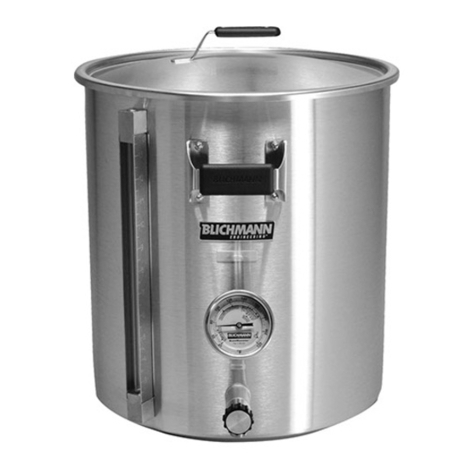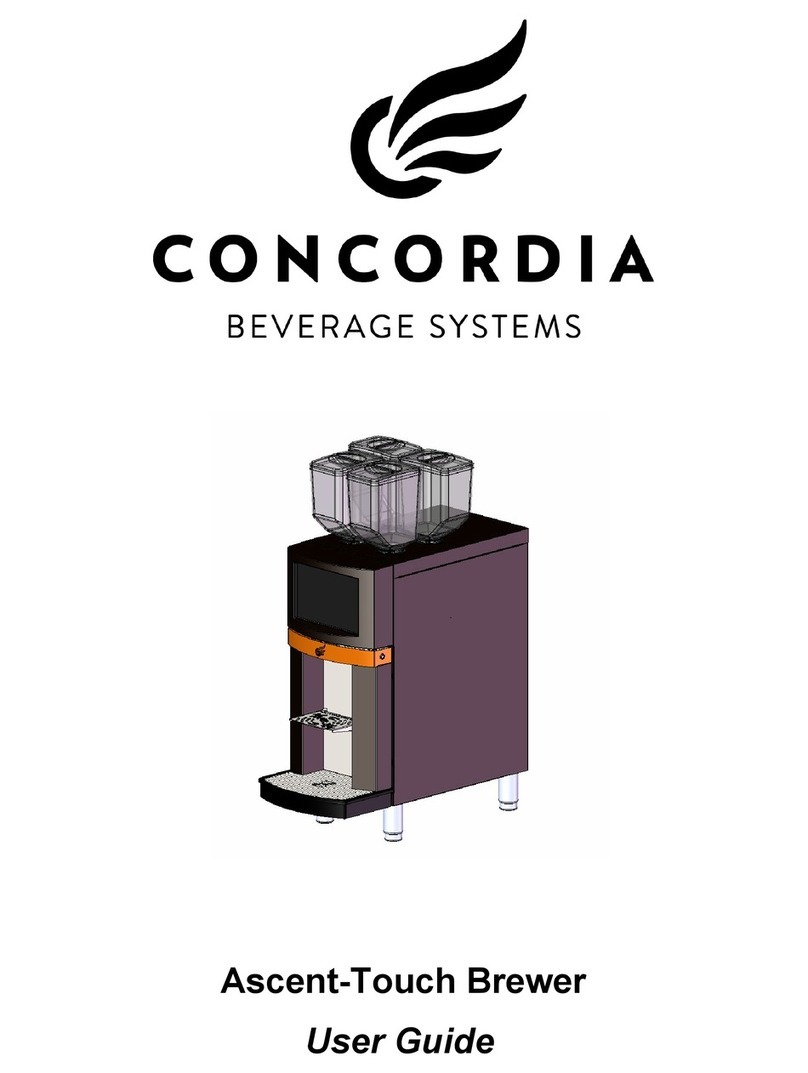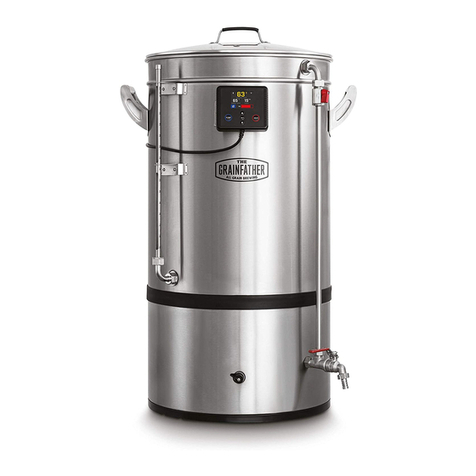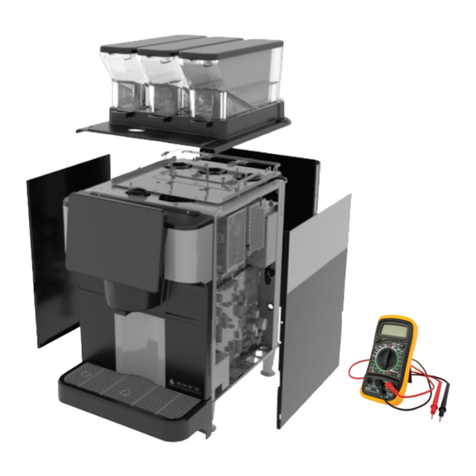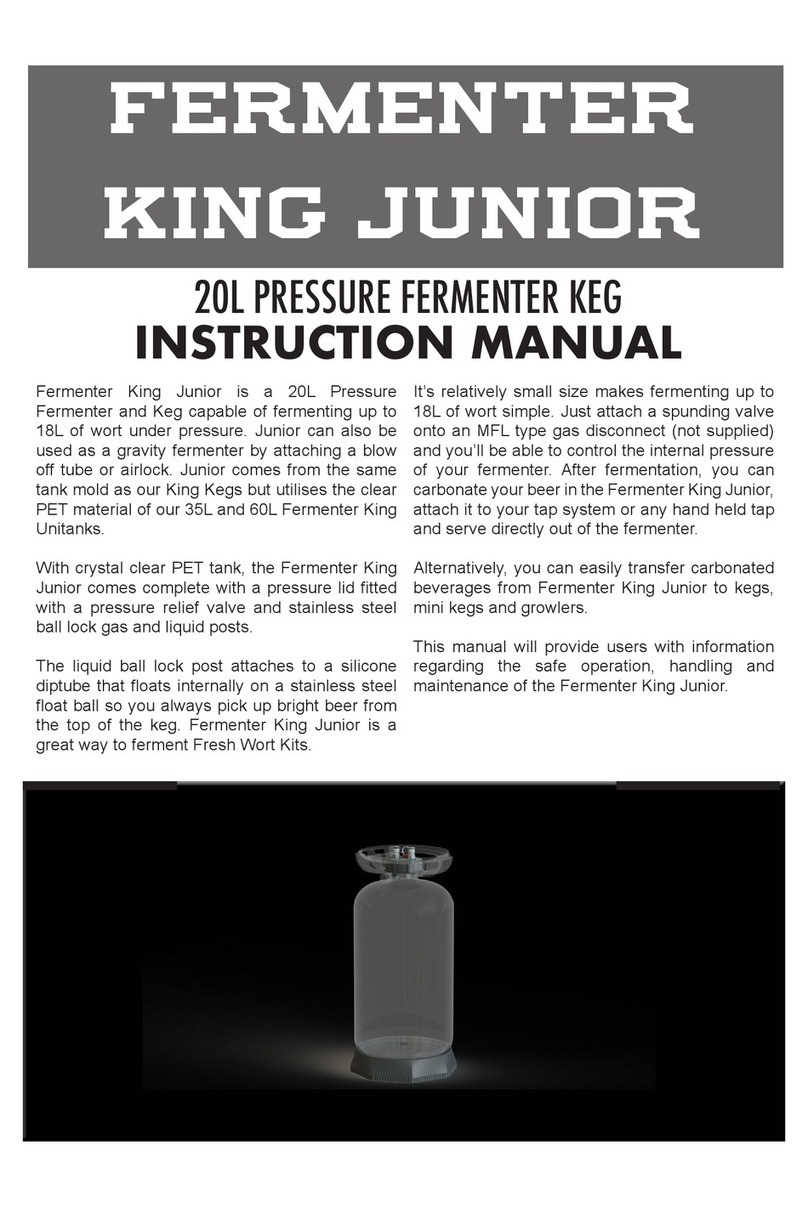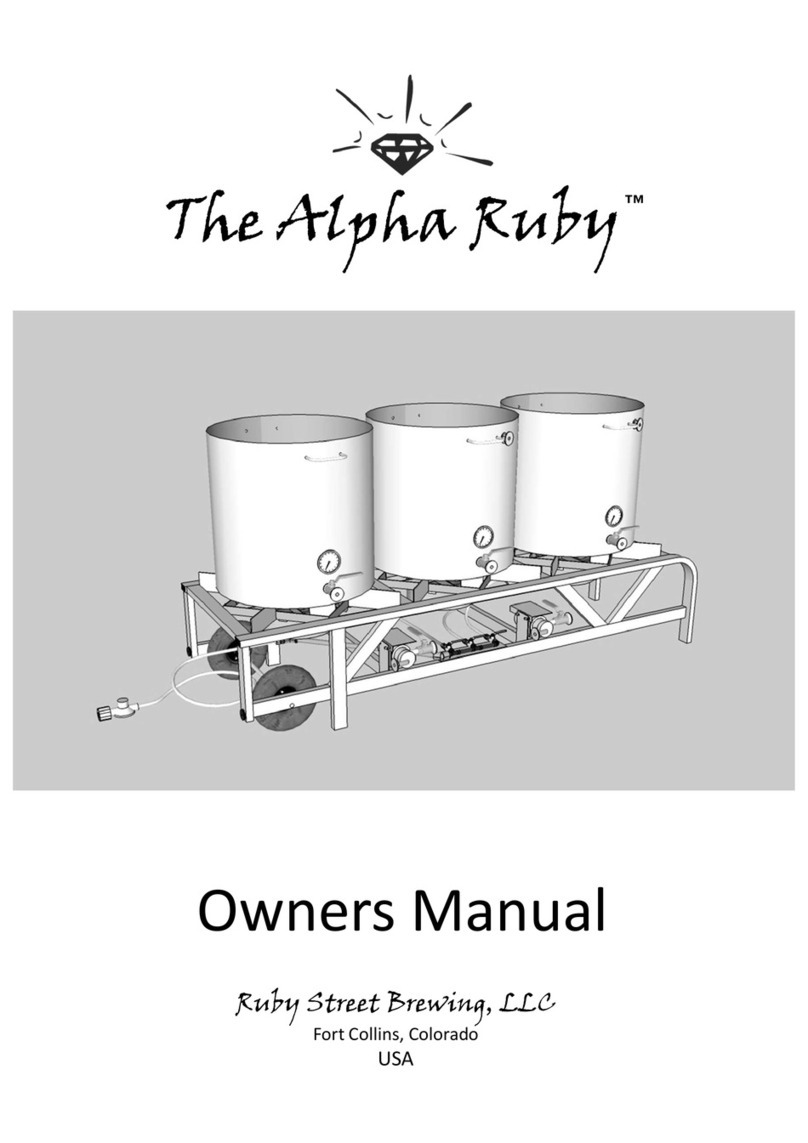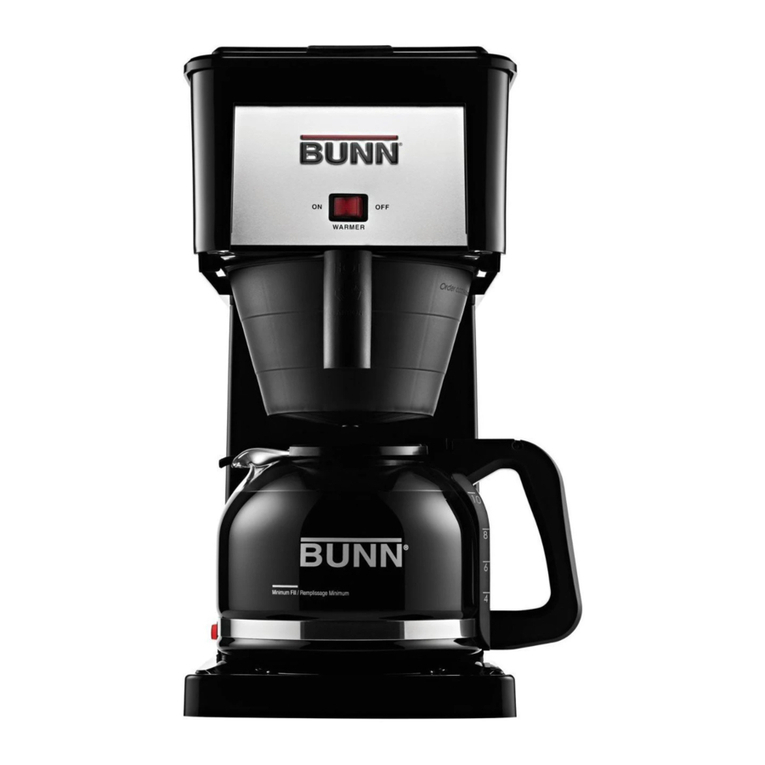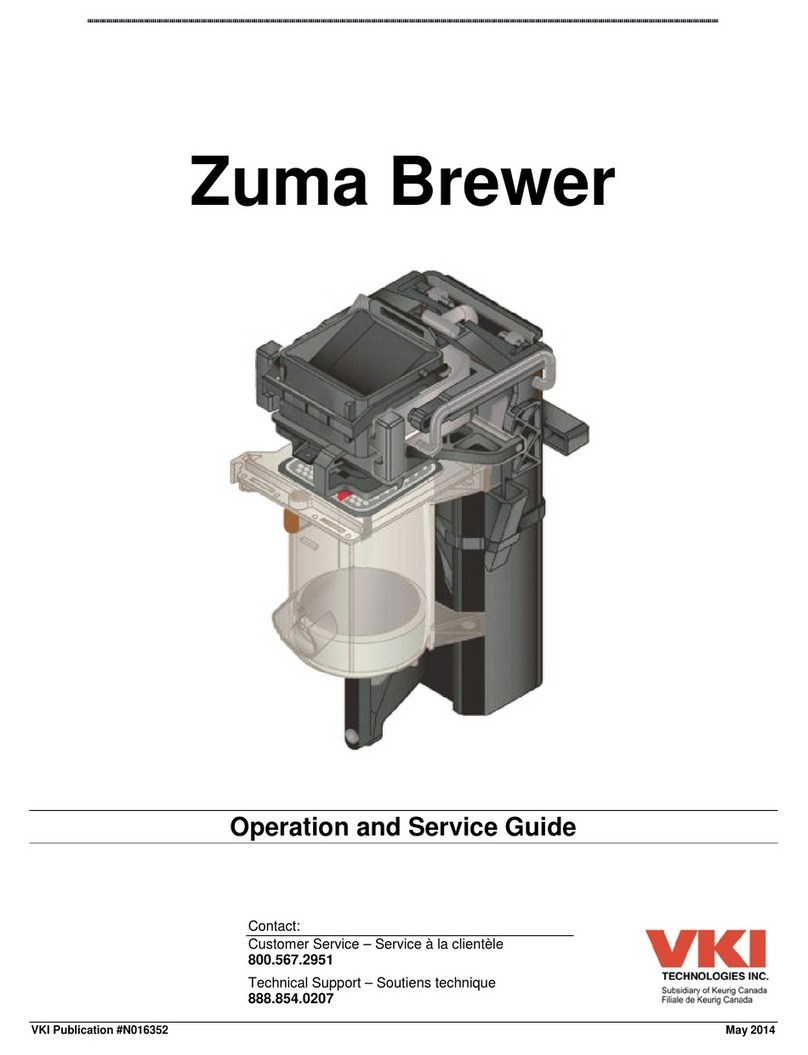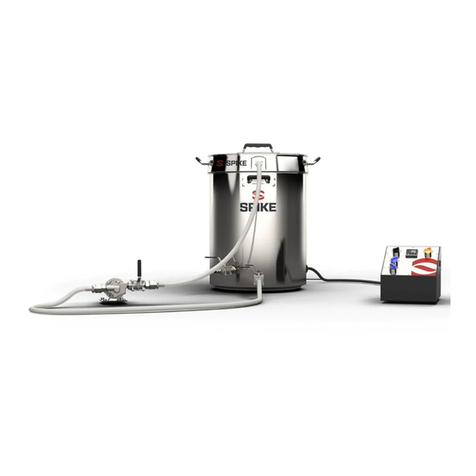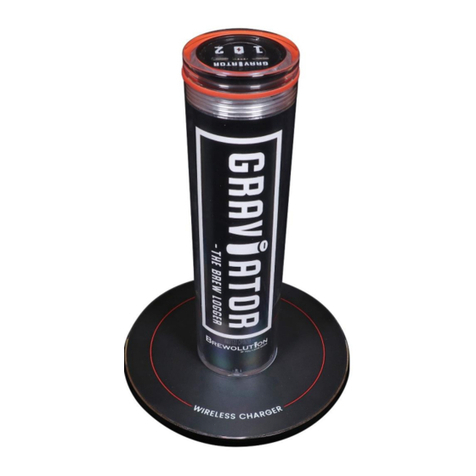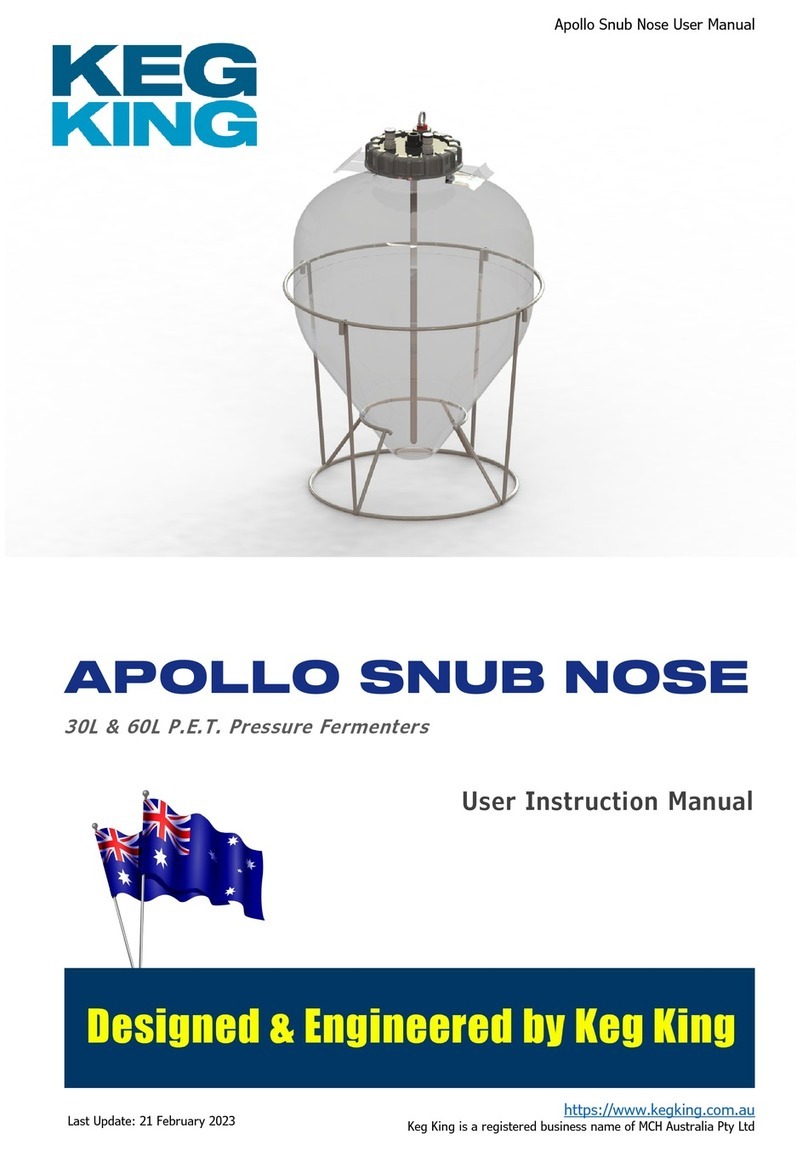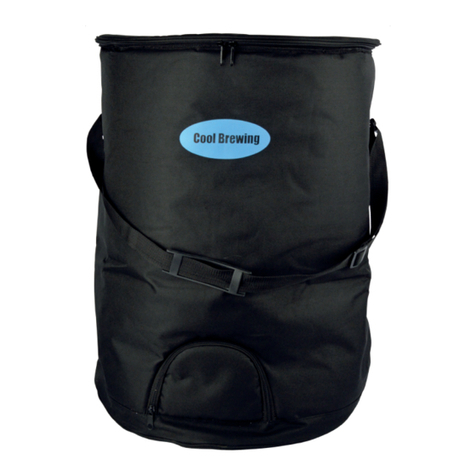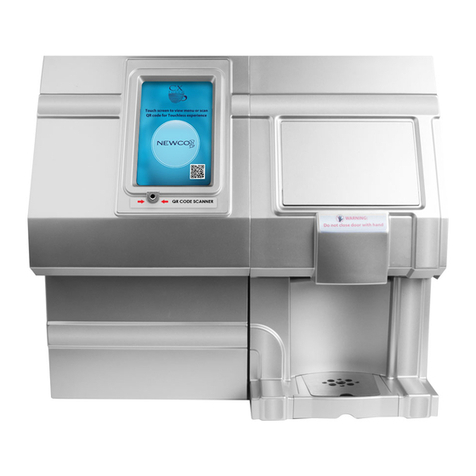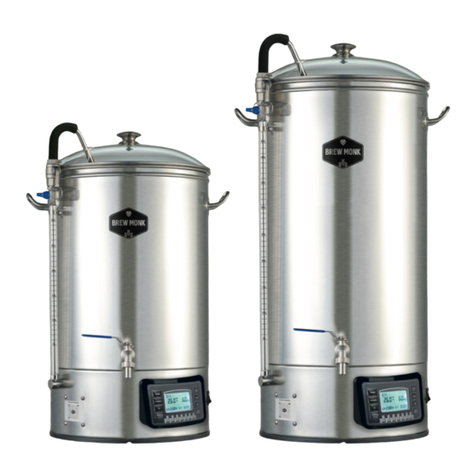Copyright © 2016 Ruby Street Brewing, LLC
Safety Instructions
WARNING: To Reduce the risk of serious injury, read the following
important precautions before using The Alpha Ruby Brewery.
•It is the responsibility of the owner to ensure that all users of this equipment are
adequately informed of all precautions.
•Use this equipment as described in this manual, do not use for anything other than its
intended purpose.
•The brewing structure must only be used on a level hard surface such as concrete. Do
not use on a surface that could be damaged by moisture.
•Make sure that all 4 legs contact the ground evenly, and that the frame cannot rock or
sway during use. Shim legs with solid material as needed to correct for uneven surfaces.
•Inspect and tighten all parts before each use. Replace any parts that are worn or
damaged immediately.
•Keep children and pets away from this equipment during use.
•DANGER! Water and Electricity Do Not Mix… Make sure that your circuit is a GFCI
protected circuit. If in doubt consult a licensed electrician before using.
•Do not leave brewery unattended at any time during operation.
•Do not attempt to tilt or move the brewery unless all kettles have been removed
•Always make sure that the control panel is powered off and all control switches are in
the off position before connecting or disconnecting any power, pump, or element
connections at the panel.
•DANGER! Unplug Panel from the main outlet before opening or servicing the panel.
•Never dry fire stainless heating elements. Energizing an element that is not submerged
in liquid will result in immediate and permanent damage.
4
